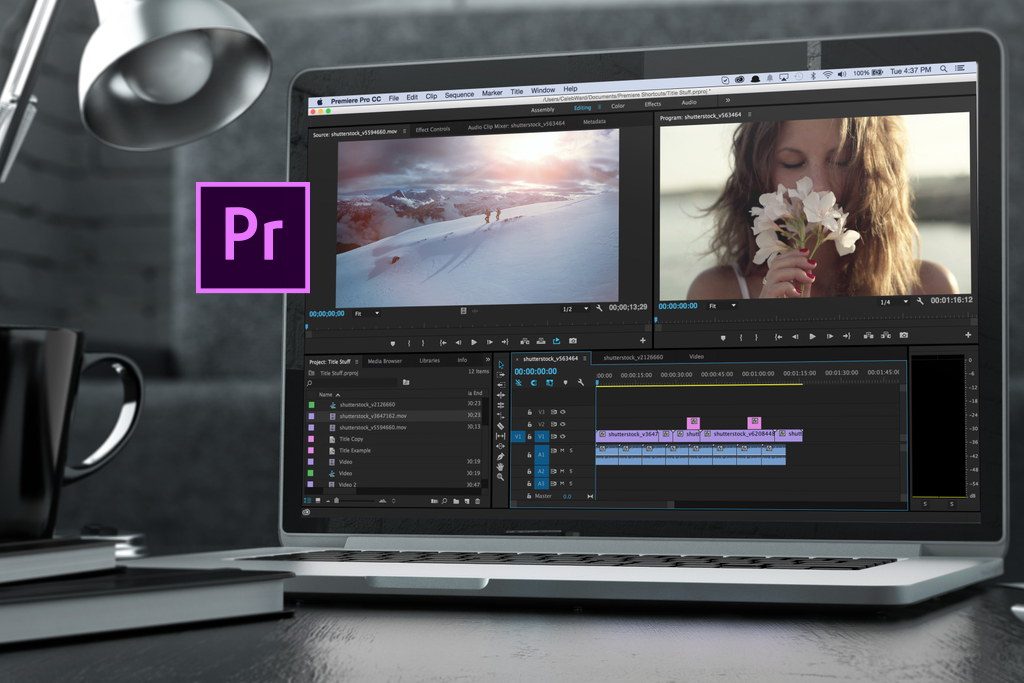
- #FADE IN PREMIERE PRO 2020 HOW TO#
- #FADE IN PREMIERE PRO 2020 FULL#
- #FADE IN PREMIERE PRO 2020 PROFESSIONAL#
And finally, highlight all the keyframes and right-click, then select Bezier.Then, add a few more keyframes alternating in size, getting closer and closer to the original size.To do this, bring the size to 0, keyframe it, and bring it back up to the size of 102, just a little bigger than the original.
 Now if you add an animation so that it grows and pops into the frame, it will work with the border around it. This ensures that whenever the footage and border will always work together. Highlight both of your clips, right-click select Nest, and give it a name. For the border and footage act as a single unit, nest your clips.
Now if you add an animation so that it grows and pops into the frame, it will work with the border around it. This ensures that whenever the footage and border will always work together. Highlight both of your clips, right-click select Nest, and give it a name. For the border and footage act as a single unit, nest your clips. #FADE IN PREMIERE PRO 2020 HOW TO#
Here’s how to nest your footage, so you only need to adjust the border once: What if you need to animate the clips, such as fade in and fade out? You’ll find that you’ll need to do the same thing for the border to make it look right. Step 3: Nest Your Clips into a Single Unit If you want to change the color of the box, that can also be done in the Essential Graphics panel.This will start to look like a small border. From there, resize the box to be slightly bigger than your footage card.Click on the Page icon, and add a new rectangle, which will then display on the screen.You should now have an empty graphics box. Go to the Essential Graphics panel, and then delete the text inside it.
#FADE IN PREMIERE PRO 2020 FULL#
Be sure that this new text layer extends for the full duration of your footage card clip. Ensure it’s between the 2 footage layers in your timeline. Our favorite way to do this is to create a Text layer. 
Since you want the footage card to be distinct from the underlying video, you could add a solid rectangular box behind or underneath the footage card.
#FADE IN PREMIERE PRO 2020 PROFESSIONAL#
Now that this point, you’ve achieved the picture-in-picture effect, but there are a few additional items you can do to improve how professional it looks.
You can now edit the clip to ensure that the correct part of the video is used. Using the Position sliders, you can alter where you want the footage to be. This will help you have a little buffer room around the footage card. It’s recommended to reduce the size by about 35-40%. From there, resize the image from the Effects Control panel to make it small enough to position in the right-hand corner. Place it 2 layers above your original footage in the timeline. Next, introduce the shot that you want to make the footage card out of. You can do this from the Effects Control panel using Scale and Position.  If the shot has the person in the center of the screen, you’ll want to adjust the position, so the speaker is left of center. Here are the steps to create this footage card: The goal for this effect is to include a small frame of picture or video within the clip, similar to a news broadcast. Let’s assume you have a video of a person talking. How to Make a Picture in Picture Effect in Premiere Pro Step 1: Create a Footage Card
If the shot has the person in the center of the screen, you’ll want to adjust the position, so the speaker is left of center. Here are the steps to create this footage card: The goal for this effect is to include a small frame of picture or video within the clip, similar to a news broadcast. Let’s assume you have a video of a person talking. How to Make a Picture in Picture Effect in Premiere Pro Step 1: Create a Footage Card







 0 kommentar(er)
0 kommentar(er)
